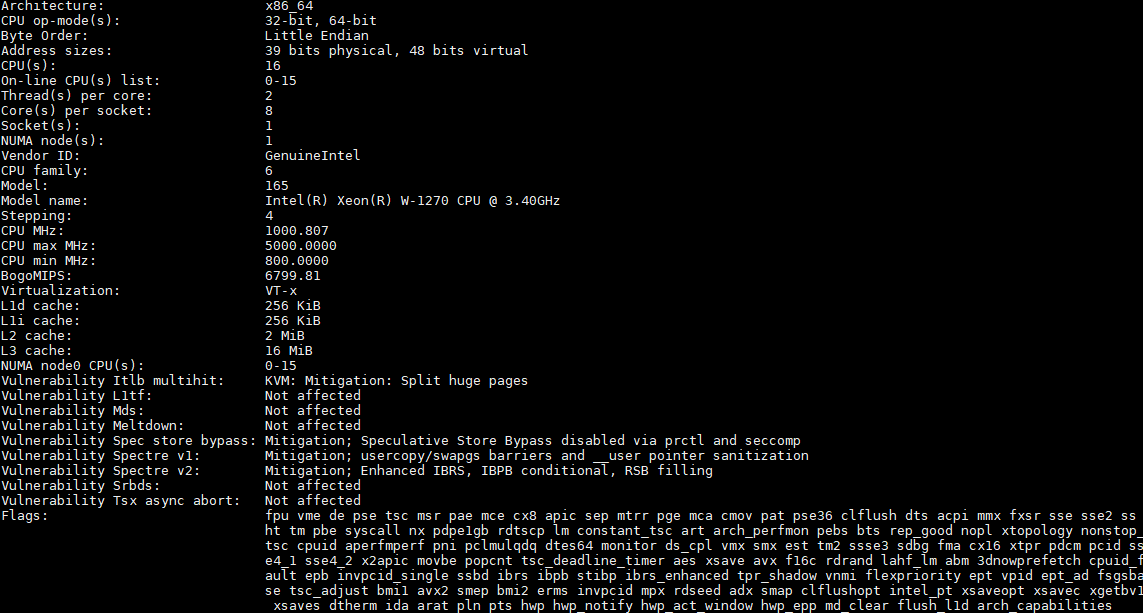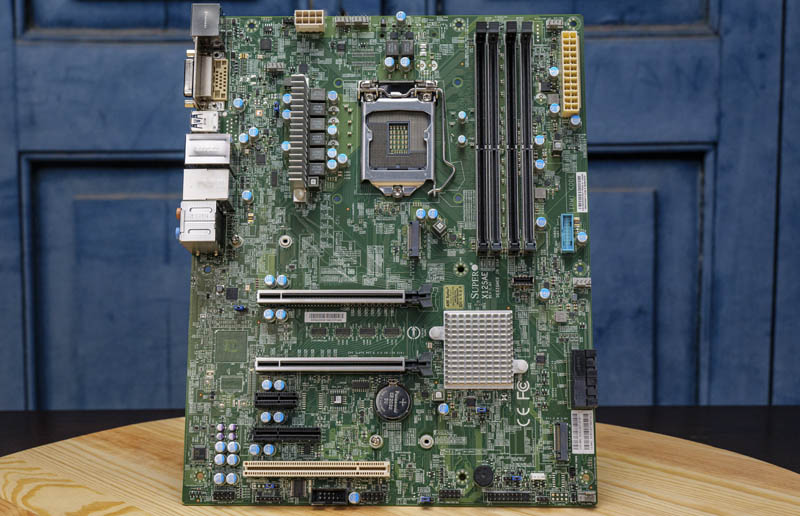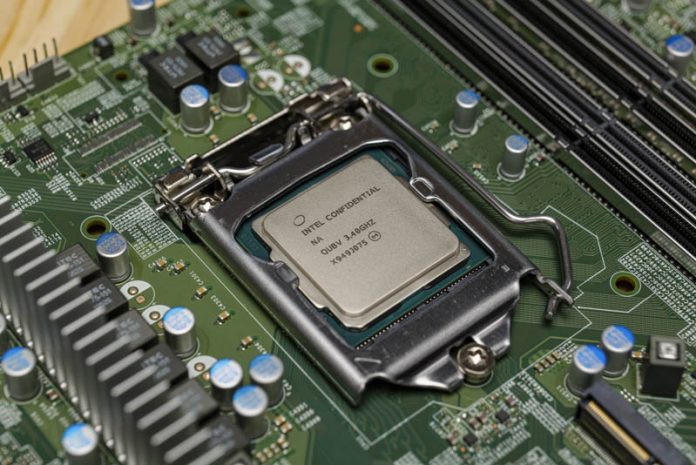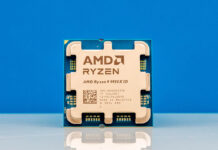In this benchmark and review piece, we are going to look at the Intel Xeon W-1270. With 8 cores and 16 threads, it rivals the previous generation’s top-end SKUs at a dramatically lower cost per core. The Intel Xeon W line is designed as the W or “Workstation” equivalent to the Intel Core series. As such, this is a SKU meant for more professional workstations rather than enthusiast PCs. Instead of a breakthrough in terms of maximum performance, we get a breakthrough in performance at the $360-365 price point.
Intel Xeon W-1270 Overview
Key stats for the Intel Xeon W-1270: 8 cores / 16 threads with a 3.4GHz base clock and 5.0GHz turbo boost. There is 16MB of onboard cache. The CPU features an 80W TDP. These are $362 list price parts. Here is the Intel Ark page for your reference.
Here is the lscpu output for the chip:

After a foray into calling its lower-end Xeon’s the “Entry” series or Intel Xeon E-2000 series, Intel has circled back to the 1200 naming convention. We chronicled the original transition in Looking back at Intel Xeon E3-1200 V1-V6 to the New Xeon E-2100. We also had a ton of Intel Xeon E-2100 and Xeon E-2200 coverage on STH. We now have the Intel Xeon W-1200 series of Comet Lake Xeons for the workstation market. Still built on venerable Intel 14nm, this is one of the last CPUs that Intel will release on 14nm process before moving ahead.
If we do a quick comparison to the Intel Xeon E-2288G we can see just how close the Xeon W-1270 is to the previous-gen 8-core part. We still get integrated P630 graphics and ECC memory support. What we lose is 300MHz of base clock speeds and 15W TDP. Based on this, we would expect the Xeon W-1270 to be close to, but not as fast as the Xeon E-2288G. Single-threaded portions of workloads should run at the 5.0GHz clocks and we still have eight cores in the same relative range of clock speeds, albeit slightly lower.
By moving this to a $362 price point compared to the $539 of the Xeon E-2288G, Intel effectively opens its top-bin slot to higher-end CPU offerings. In this case, the Xeon W-1290P that we will review on STH soon. Comet Lake Xeon W-1200 series offerings can now hit 10 cores. For anyone on older Xeon E3 systems, you can now get twice as many faster cores in the Xeon W-1200 series platform for $362 and scale up to 2.5x the cores that were available in this segment for years with a 10 core part.
We do want to mention here that there is also an Intel Xeon W-1270P part. That “P” part has a much higher 125W TDP. It also has a 3.8GHz base clock and a 5.1GHz maximum turbo boost frequency. Although they may sound like similar chips, the Xeon W-1270P is more of a higher-end 8 core part as Intel abandons the old Xeon E numbering conventions.
Test Configuration
Here is our basic configuration for this class of CPU:
- Motherboard: Supermicro X12SAE
- CPU: Intel Xeon W-1270
- RAM: 2x 16GB DDR4-2933 ECC UDIMMs
- SSD: Intel DC S3710 400GB
- SATADOM: Supermicro 32GB SATADOM
The CPU itself supports up to 128GB of RAM, in a 4x 32GB configuration. We see these platforms using 16-64GB or less given cost sensitivities. One can also use ECC memory, but be aware these are unbuffered DIMMs not RDIMMs.

There are going to be folks who want to point to AMD alternatives. On the consumer/ enthusiast side, the AMD Ryzen platforms are incredibly competitive offering more cores. We have also seen a few Ryzen server platforms such as the ASRock Rack X570D4I-2T. The Xeon W-1200 series is focused on segments of the market where large OEMs are selling workstations to corporate clients.
Next, we are going to look at our Intel Xeon W-1270 benchmarks, we are then going to focus on power consumption then conclude with our final words on the processors.





Graphical Screenshots of Terminalwindows is something for idiots.
Great performance review! Nicely done.
What would be interesting to see is the boost behavior compared to a 10700.
Wondering if the Xeons are more focused on high-load scenarios compared to their Core i7/i9 counterparts.
Why does this article compare w-1270 with e-2288g? Why ignore the e-2278g which has identical 3.4g base freq, identical 5.0 single core turbo, identical 14nm++++ and identical 80w tdp? What is the difference between these two seemingly identical chips? E-2288g at 95w isn’t really relevant here.
mostly the w1270 requires a new chipset and thus a new mainboard. which is a shame since it’s basically the same silicon as a e2278G…
How does the W-1270 compare to W-2245? I cannot see how/why W-2245 is superior.